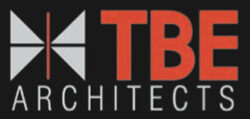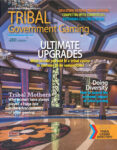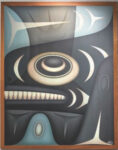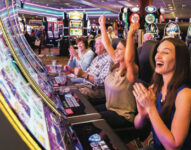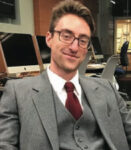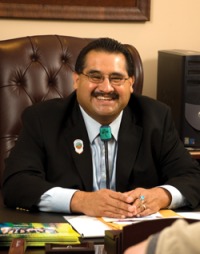
The Hon. James Ramos has served as chairman of the San Manuel Band of Serrano Mission Indians for the last three years. Earlier this year he became the first American Indian appointed to the California State Board of Education. He also recently won re-election to a second term on the San Bernardino Community College Board of Trustees. In January 2008, Ramos was appointed by Governor Arnold Schwarzenegger to the Native American Heritage Commission, where he currently serves as chairman. He spoke with Tribal Government Gaming Contributing Editor Dave Palermo in February.
Tribal Government Gaming: Santos Manuel, the leader of the Serrano community in the 1800s, said his father and mother, Antonio and Helena, were loved and respected for their generosity. Is that generosity indicative of most Serrano people and Serrano culture?
Chairman James Ramos: It’s indicative of all Indian cultures, the spirit of giving.
The hundreds of millions of dollars in charitable giving nationwide by most tribes with casinos are driven largely by requests for help. But San Manuel’s charitable policy is driven by tribal culture and traditions and San Manuel’s commitment to its ancestral lands. Could you elaborate?
Serrano ancestral lands make up a huge territory. Our ancestors—the Yuhaviatam—were but one clan of the Serrano people. But we have a strong and genuine tie to the ancestral lands of all Serrano people. We have a cultural responsibility for the discovered remains of Serrano people, to ensure reburial.
We also have a responsibility to the modern communities within our ancestral lands. We know there is a lot of hardship in those communities. We’ve experienced those hardships ourselves. We know what is like to ask for donations. We very much care about helping people.
That caring seems to extend beyond the borders of San Manuel’s 800-acre reservation.
It does. When you look at contributions this tribe—the people of Santos Manuel—have made, it’s not just to the local communities. We’ve made contributions to neighboring states and the Midwest and to Indian tribes throughout the country.
San Manuel’s charitable giving policy lists as areas of interest education, health, economic development and special projects. How was the decision reached to concentrate on those areas?
We came together to define a core value of understanding what it is we want to contribute to, what were the greatest needs of the communities and how our contributions could be utilized to empower the communities and their citizens.
I feel strongly about education. Once you have an education, no one can take that from you. You can move forward and market yourself, regardless of your ethnicity.
Health is a big issue. It’s wrong to see older people standing in line, needing to pay $80, $90 or more for prescriptions. And they don’t have it so they’re doing without those medicines. There has to be an understanding and awareness that help is needed. We have a partnership with health providers such as St. Bernardine Medical Center and Loma Linda University Medical Center, to ensure old people and children are helped, regardless of whether they can pay their bills. It is our genuine concern to help ensure a healthy environment.
Economic development is a crucial area. We as a tribe need to be involved in major economic development projects that help sustain surrounding communities. With unemployment, we all suffer: restaurants, the gaming industry and all businesses.
Once you’ve established a relationship you build up trust and mutual understanding and you know where to go and who to talk to and you can move quickly and responsibly in times of catastrophe.
The people of Santos Manuel have displayed a great commitment to indigenous communities.
That’s a big part of our charitable giving policy. Indian communities are often overlooked for major funding in times of emergency. We provided a sizeable contribution ($100,000) to Noli Indian High School on the Soboba Reservation to ensure the dreams of those students are fulfilled and they know they can succeed and move forward. We worked with Sherman Indian School in Riverside County, to help provide technical training.
Even if you can give only a little bit, to help reach a solution, it goes a long way.
You stepped forward when the Havasupai people of the Grand Canyon were devastated by a flash flood, when a wildfire destroyed the White Mountain Apache timber industry, when winter storms isolated the Lakota Indians of the Great Plains and when brushfires ravaged indigenous communities in Southern California.
It’s an education to non-Indian communities that tribal governments have economies. The flash floods in the Havasupai community wiped out its entire tourism economy. If any other community or government had been wiped out in a similar fashion there would have been resources flowing into that community, because its economy had been depleted. There wasn’t an outcry to help the Havasupai. So our tribe made a donation. We also provided them with an early warning detection system downstream, so that in the future if floodwaters are headed their way, they have time to get to higher ground. In 2008, it was astonishing that they did not have that technology.
Did any one particular act of charity by San Manuel give you special pleasure?
Expansion and renaming of the student union at California State University, San Bernardino, the Santos Manuel Student Union Cross Cultural Center. That was a great accomplishment for the tribe and American Indian people in California. I believe it is the only building on a state campus named after a California Indian leader.
Santos Manuel was driven out of the mountains in 1866 by gunfire and led our clan to the valley floor. To have a building named after him, where so much education is happening and where our annual California cultural conference is held, that’s a big accomplishment. That will last long after the era of tribal gaming has passed. People will ask, “Who is this building named for?” and they will learn the history and culture of our people.
When you see all the cultural activities taking place in that building—all the Indian and non-Indian students learning about Indian people—you have the vision that Santos Manuel is there, alive.
What we do in our lives today, isn’t so much driven by what we want to do, but the ideas and visions of others who came before us. We become the means by which their hopes and dreams are realized.
Have you shared details of San Manuel’s charitable policy with other tribes?
Some have asked. A lot of tribes have their own policies and their way of giving. Sometimes it’s asked why we give so much.
But no one is an island. We all thrive off one another. We are all part of a greater community. If we depend on people from surrounding communities to spend their discretionary income in our gaming establishment, we should be looking at those communities, making sure the people are healthy and happy and have the education and opportunities to move forward.




